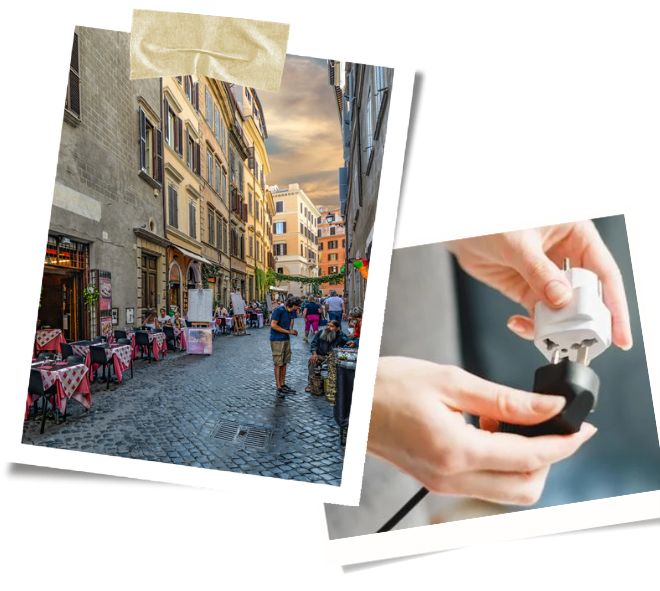- Direct: 705-929-2538
- Email: [email protected]
It’s time to … Be Adventurous


Travelling to Europe is a big Bucket List item for many people, and should not be treated last minute!
If you want the best experience, you need to plan ahead!
So today I will provide you with a few tidbits you should think about when considering travelling to Europe!

Travelling to Europe is an absolutely delightful experience that promises to be a breathtaking journey filled with adventure, excitement, and cultural enlightenment. It’s a completely different experience than your typical all-inclusive vacation, meaning that your budget will also need to adapt accordingly! Unlike the standard resorts, where flights, accommodations, meals, transfers and activities are all included in one convenient fee, in Europe, you will pay separately for each of these essential components of your trip. The cost, of course, varies depending on when, where, and how long you are planning to go, which is why an approximate cost would not do justice to your trip’s concept! Still, in general, it will cost you more than what your previous all-inclusive vacation did.
I provide my clients with a complete package deal for the optimal European travelling experience. This includes flights, hotels (with breakfast included whenever possible!), transfers, tours, and some free days for exploring. This approach guarantees my clients a well-rounded, cost-effective, and unforgettable trip that they will cherish forever.

It’s important to keep in mind Europe’s busiest season, which falls between June and August. During this time, temperatures rise, and prices for accommodations and attractions follow suit. Furthermore, given the influx of tourists during these months, you can expect long queues and crowded spots, which would impede your travel experience. It’s therefore essential to plan ahead to find places to stay and tours to take. In contrast, if you’re hoping for a more laid-back trip, consider travelling during the spring season when the weather is pleasant, and prices are more pocket-friendly. Specifically, late April to early May has proved to be an ideal time to visit as attractions are less crowded, and there’s a calming vibe in the air.
Nowadays, most destinations require your passport to be valid for at least six months after your return date. Most European countries also require at least one blank page in your passport, but there are some that require two blank pages (Germany and Italy are just two that come to mind). So it is very important you know this in advance so you can make sure you meet the country’s requirements, as you can be turned away.
NOTE: Entry requirements are constantly changing. I will make sure you have up-to-date information.


You just flew over the pond and you need to get yourself in the proper mindset. It usually helps if you actually adjust your schedule the day before you actually travel (like going to bed early). Most flights to Europe are overnight, so if you didn’t sleep on the plane, DON’T sleep once you arrive at your hotel! Instead, fight it and walk around and take in some sights of where you are staying. Getting some exercise is actually good for combating jet lag. Try and stay up at least until 10 p.m. local time!
Travelling can be such an adventure, especially when going abroad. It’s always wise to prepare ahead to avoid any possible inconveniences. Europe, in particular, has a different voltage standard from that of Canada. Canada’s voltage is usually at 110V, while Europe’s power output is sitting at a higher 220V. Being aware of this voltage difference is crucial in ensuring that your electrical devices will not get damaged while travelling around Europe. So, to be on the safe side, it’s best to check if your devices have built-in converters to match the standard or bring a converter with you.
A universal travel plug adapter would also be a helpful gadget to have in your baggage. It allows you to plug your devices into different sockets in different countries, making your travels more convenient and prepared. Remember, knowledge is power. So, always be aware and prepared for any voltage differences when travelling to Europe.

One way to see several European cities, and sometimes several countries in one trip, is with a river cruise!
It’s not your typical cruise, each day you are are a port and you are exploring the city with pre-paid tours and it is a great way to experience local culture.
And the best part, you won’t need your motion sickness pills! So if you want to check several European cities off your Bucket List — a river cruise might be your best option!

Correspondent and Avid traveller